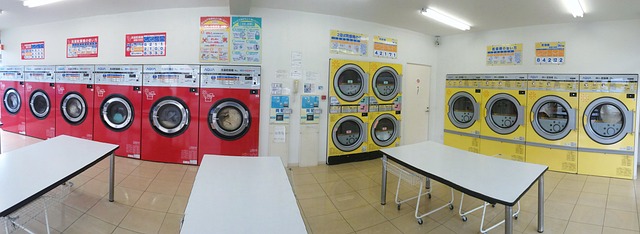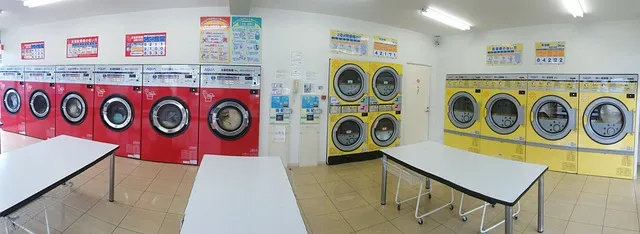What Are the Most Energy-Efficient Settings for Drying Towels and Bedding?
First off, always choose the “low heat” or “delicate” setting. This might seem counterintuitive since you might think higher heat dries faster, but low heat actually conserves energy and prevents wear and tear on your fabrics. It’s like taking a leisurely stroll instead of a sprint—slower but gentler and more sustainable.
Next, consider using the “auto-dry” or “moisture sensor” feature if your dryer has one. This setting automatically stops the cycle when your clothes are dry, preventing over-drying. Think of it as your dryer’s way of knowing when to call it quits—no more guessing games or wasted energy.
If you’re looking to stretch your energy savings even further, running a full load of towels and bedding rather than multiple smaller loads is key. A full load maximizes the efficiency of each drying cycle, just like filling up a car’s tank all at once rather than making multiple trips to the pump.
Another trick is to use the “air fluff” or “no heat” setting for a final tumble. This setting helps to fluff up your towels and bedding without any extra heat, using just air to finish things off. It’s like giving your laundry a refreshing breeze after a warm day.
Lastly, consider the power of a good spin cycle. Before tossing your items into the dryer, a high-speed spin in the washing machine can wring out excess water, reducing drying time. It’s akin to squeezing out excess water from a sponge—less water means less time needed to dry.
Save Energy and Money: Top Tips for Drying Towels and Bedding Efficiently
First off, let’s talk about the humble clothesline. It might sound old-fashioned, but hanging your towels and bedding outside on a sunny day is like giving them a free spa treatment. The sun’s rays and fresh air work their magic to dry your linens quickly and naturally, saving you the energy needed to run the dryer.
But maybe you’re not a fan of outdoor drying or you’re dealing with rainy weather. No worries! Consider using your dryer’s energy-saving features. Many modern dryers come with sensors that stop the cycle once the clothes are dry, preventing excess energy use. Also, drying towels and bedding separately can help them dry more quickly and evenly. It’s like giving each item its own space to breathe.
Another trick? Boost your dryer’s efficiency by tossing in a few dryer balls. These little spiky wonders help to separate your laundry, allowing hot air to circulate better and reducing drying time. Think of them as the personal trainers for your dryer, helping it work harder and smarter.
Finally, don’t overlook the power of the spin cycle. A higher spin speed before drying extracts more water from your laundry, meaning less work for your dryer. It’s like wringing out a sponge before putting it away – less moisture means faster drying.
By tweaking your drying routine with these simple tips, you’ll be saving energy and money, all while keeping your towels and bedding fresh and cozy.
How to Achieve Maximum Drying Power with Minimal Energy: Expert Advice

First off, clean your dryer’s lint filter before every load. This simple step can drastically improve airflow and efficiency, allowing your dryer to do more with less. It’s like giving your car a fresh tune-up to ensure it runs smoothly.
Next, consider the load size. Overloading your dryer is like stuffing too much into a suitcase—it just doesn’t work as well. Dry smaller loads separately to ensure that each item gets ample airflow and dries evenly.
Another expert tip is to use the dryer’s moisture sensor if it has one. This nifty feature can detect when your clothes are dry and automatically shut off the machine, saving energy and preventing over-drying. Think of it as having a built-in GPS that guides you to the most efficient route.
You should also think about optimizing the dryer’s settings. For instance, using the “eco” or “energy-saving” mode can reduce energy consumption while still getting your clothes dry. It’s like switching to a more fuel-efficient driving mode.
Finally, consider adding dryer balls to your load. These little gadgets help to separate clothes and improve air circulation, reducing drying time and energy use. It’s similar to how a well-designed track can enhance a race car’s performance.
By incorporating these strategies, you can maximize your dryer’s efficiency while keeping energy consumption in check. Who knew achieving top drying power could be so straightforward?
The Ultimate Guide to Energy-Efficient Drying: Best Settings for Towels and Bedding

First off, always choose the “low heat” or “eco” setting when drying towels. High heat can be tempting for faster results, but it often shortens the lifespan of your fabrics and wastes energy. The low heat setting uses less energy and is gentler on your towels, helping them stay fluffy and soft longer. Plus, many modern dryers come with sensors that detect when your towels are dry, automatically stopping the cycle to prevent over-drying.
For bedding, especially larger items like comforters, the trick is to balance drying time and energy use. Large loads take longer to dry, so it’s best to use the “medium heat” setting. This setting strikes a good balance, drying your bedding effectively without using excessive energy. Also, consider drying items in smaller batches to speed up the process and ensure even drying.
If you have a dryer with moisture sensors, use them! These sensors monitor the moisture level and adjust the drying time accordingly. They’re fantastic for energy efficiency since they prevent over-drying, which not only saves energy but also protects your fabrics from damage.
For both towels and bedding, adding dryer balls to the load can help improve air circulation and reduce drying time. Think of them as tiny personal assistants that help your dryer work more efficiently, making sure every inch of your linens gets evenly dried.
Cut Your Energy Bills: The Most Efficient Dryer Settings for Towels and Bedding Revealed
First off, always opt for the ‘Towel’ or ‘Heavy Duty’ setting when drying bulky items like towels. These settings are designed to handle large loads and optimize heat distribution, ensuring that everything dries evenly. This means fewer cycles and less energy wasted. Who doesn’t love a little extra efficiency?
Next, consider the ‘Low Heat’ setting for delicate bedding. It’s a game changer for reducing energy consumption without compromising on quality. Low heat settings prevent high temperatures that can wear out fabrics faster and increase your energy use. It’s like treating your bedding to a gentle, soothing spa day while keeping your bills in check.
Also, remember to clean your lint filter regularly. A clogged filter forces your dryer to work harder, consuming more energy. Think of it like a traffic jam for your clothes; clearing the way speeds up the process and saves energy.
And here’s a tip: try to use dryer balls. These little wonders help separate your items and increase airflow, which means quicker drying times and less energy use. It’s like giving your dryer a helping hand!
Eco-Friendly Drying Hacks: Optimize Your Dryer for Towels and Bedding
First up, let’s talk about lint traps. It’s like a mini-dust magnet that’s crucial for efficient drying. Make sure you clean it out after every load—yes, every single time! A clogged lint trap is like trying to breathe through a straw with a milkshake; it just doesn’t work efficiently.
Next, consider using dryer balls. These are not just quirky little gadgets; they work by bouncing around and separating your laundry, which allows hot air to circulate better. The result? Faster drying times and softer fabrics. Plus, they’re reusable and cut down on the need for dryer sheets, which is a win for the planet.
Now, what about those overstuffed loads? Overloading your dryer is like trying to squeeze too many books into a small backpack; it’s cramped and inefficient. Aim for smaller, more manageable loads. It might take a bit longer, but your towels and bedding will come out fluffier and drier.
And don’t forget about the dryer’s settings. Using lower heat settings for your towels and bedding is a game-changer. It’s like slow cooking—gently and thoroughly, preserving the quality of your fabrics while saving energy.
Lastly, try to clean the dryer vent regularly. This is crucial because a blocked vent is like a traffic jam for hot air. Keeping it clear ensures your dryer runs smoothly and efficiently.

